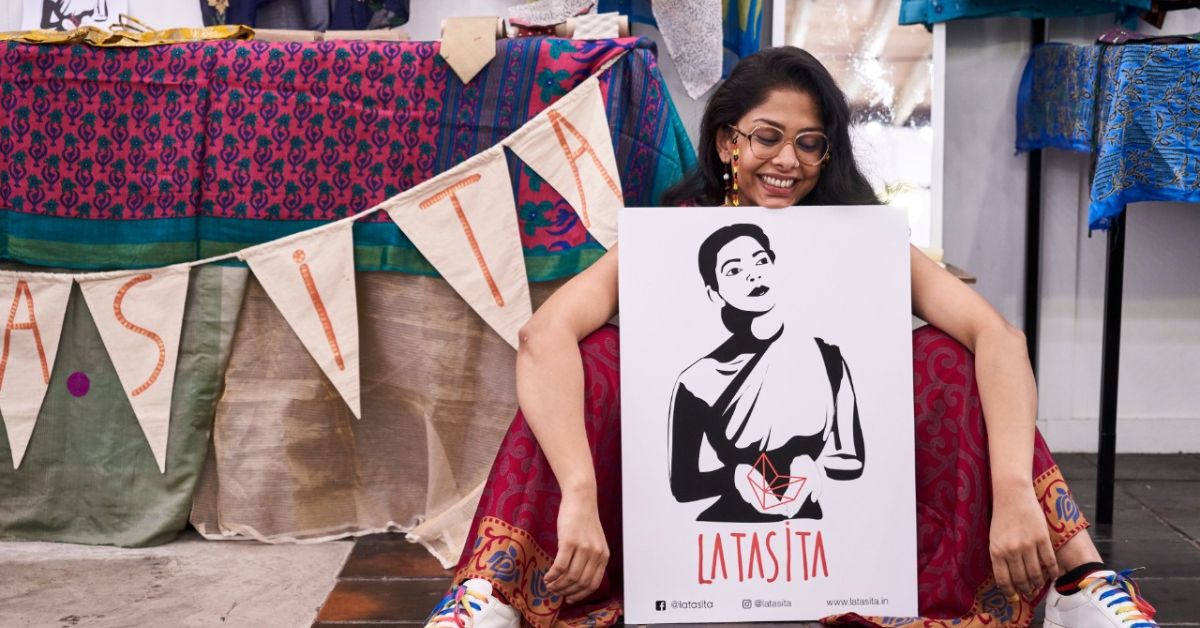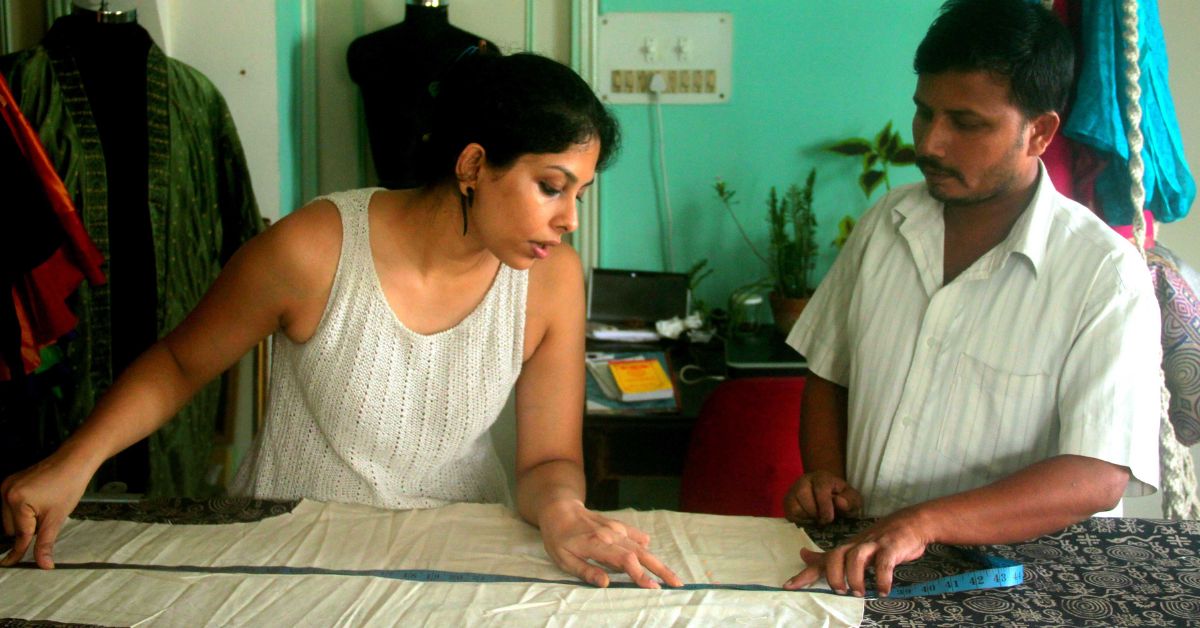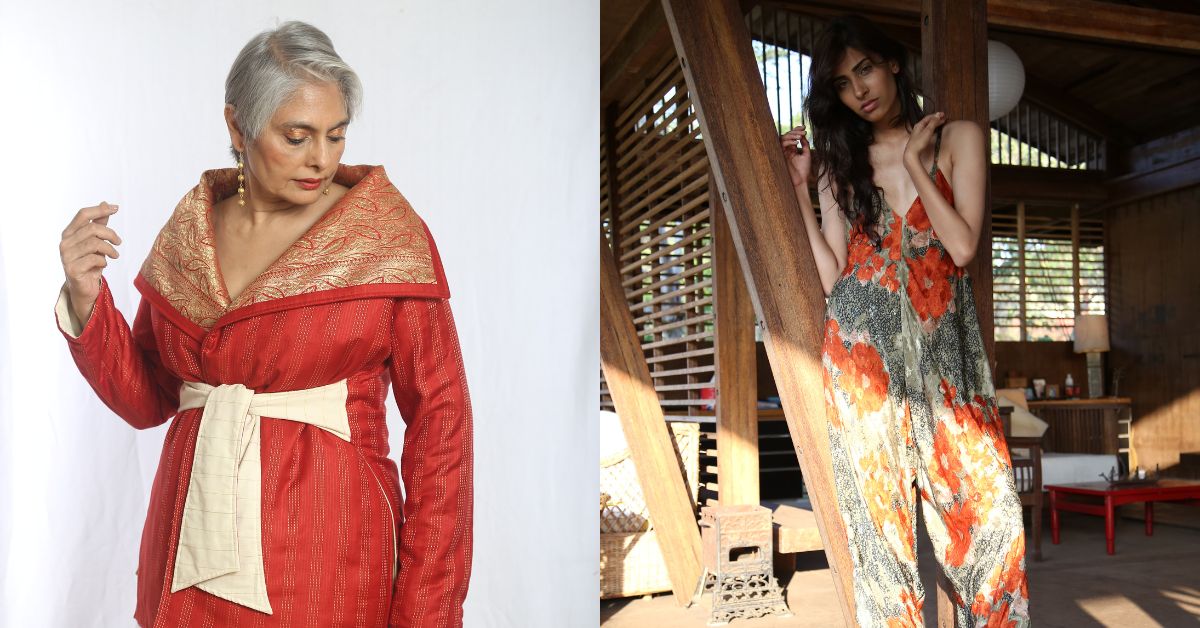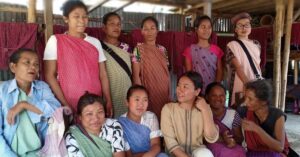Kolkata Girl Turns Old Sarees, Curtains & Even Durga Puja Pandals into Chic Clothes
Former journalist Meghna Nayak quit her job and launched LataSita, a sustainable fashion brand that can turn old sarees, waste material, curtains, bed sheets and more into trendy and chic fashion.

Most of our lives are spent in pursuit of meaning, and even in our professional careers, we continue to search for our passion.
But there are a lucky few who marry their passion and profession. Among them is Meghna Nayak from Kolkata.
The 37-year-old initially studied to be an environmental journalist. It was during her Bachelor’s degree in Journalism from Falmouth University that she first realised the truly heinous impact of fast fashion on the environment.
“My research began as a student of journalism in Cornwall, where I found my understanding of sustainability, and realised the environmental and human cost of production, particularly electronics, food, and garments,” she tells The Better India.
“I learned that fashion is the second largest polluter, second only to the oil industry. The chain from crop to customer leaves a toxic trail, unwittingly enabled by us with each purchase. We don’t know our place in the chain. Textile pollution, which contributes to 20% of water pollution globally, needs to be addressed,” she adds.

According to the United Nations Environment Programme, fashion accounts for up to 10% of global carbon dioxide output — more than international flights and shipping combined. A Bloomberg report states that it also accounts for one fifth of the 300 million tonnes of plastic produced.
But in 2008, after finishing her graduation, the journalist did not think of starting something on her own. She thought she would, instead, write about what was wrong with fast fashion. She worked at a newspaper in Kolkata after returning to India, and at one time, was juggling three jobs to support herself.
More than a decade ago, there weren’t too many opportunities for environmental journalism in India. As Meghna became acutely aware of the problems of fast fashion beyond pollution, she could no longer be a mute spectator. She decided to walk the talk.
Newness and nostalgia

“I learned more about the exploitative and cruel methods practised in sweatshops supplying so many of my (former) favourite brands. The workers have little to no human rights. I had become uncomfortably aware of this and it really got to me. I then thought that I could enter the fashion supply chain and try, firsthand, to do things differently and experience the challenges of running an ethical business,” says Meghna.
Now, the question was, what could she do? Where should she start? The answer soon seemed clear — a sustainable fashion enterprise.
“I looked at various options. I saw organic cotton, handlooms etc, but even these aren’t really sustainable. I then learned about upcycling, something that our grandmothers have been practising for generations. What’s better than working than something that is already present in this world? Upcycling is the gold standard of sustainability,” opines the entrepreneur.
And right on cue, while she pondered over her options, she chanced upon her mother’s wardrobe.
“I found gorgeous sarees that belonged to my grandmother, which my mother had preserved over the years. There were many such sarees which she had inherited, gifted or bought, but rarely wore,” she recalls.
She continues, “I realised that there are millions of such sarees carefully preserved in wardrobes across the country, but they’re hardly worn. These treasure troves should not be allowed to decompose unseen and unused, even as new cloth is being created to satisfy the demand.”
Meghna found her answer in her mother’s wardrobe.
“In using the upcycled saree, I found something that not only had a charming sense of newness and nostalgia, but the smallest carbon footprint and intact ethical credentials.”
It was in 2011 that officially launched LataSita, still working three jobs. She pooled in her savings of Rs 5 lakh to start the business. She continued to work the other jobs till she was comfortable enough to make LataSita her main source of income, about three years later.
The first product she created was a banarasi skirt from her mother’s saree. Today, she has a waitlist for her clothes.
LataSita receives sarees from across the country and creates custom pieces.

“I have two lines — pret and custom. I make jackets, skirts, and tops for the pret line, and showcase them in exhibitions. For custom, women bring me their sarees and we figure out what to make of it. We mostly make around 300 pieces every four months. During the festive season the number is more, and summers are usually quieter,” she explains.
Meghna is the only designer at LataSita and works with a team of four tailors. Her products range from Rs 2,500-Rs 25,000, and most of her pieces are priced between Rs 3,500 and Rs 8,000.
Apart from sarees, she sources old textiles, materials from export houses, curtains, bed sheets, and even old Durga Puja pandals. She gets ribbing from export houses that can be used in sleeves and waistbands, and all in all, lets her creative juices flow with every product.
“I recently created a sherwani out of tussar curtains. Someone brought along her wedding choli and 17 pairs of jeans, none of which fit anymore. We took 12 of these apart and created a fabulous denim jacket,” says Meghna.
The designer tries to ensure that the wastage is minimum and uses old clothing for everything, other than buttons and zips.

“There’s a huge amount of repairing, restoring, reviving, cleaning, and darning. The best part is that it is a transparent and short, closed-loop production chain. Any customer can know exactly who made their clothes and can personally come and see what conditions they are made in. As I have a huge collection of materials to choose from now, I try to even sometimes use lining from them,” adds Meghna.
She even tries to dispose of her waste ethically, by donating “every last scrap”.
“We neatly segregate our waste, and reuse and donate as much as possible. We can weigh our monthly waste in grams. We have packed whatever waste cannot be donated and kept it in our studio to dispose of it ethically. We give useful bits to stuffed toy manufacturers,” says Meghna.
Focus on social and environmental loss

While upcycling was new in 2011, it’s “cool” today. Yet, people inherently have a problem with wearing what they perceive as “old clothes”, Meghna says.
“One of the major challenges I faced in the beginning was the mentality of wanting to buy something ‘new’. People weren’t comfortable with a product made out of an old saree. Today, things are different. People are realising the importance of environmentally sound textiles. I have grown organically since the beginning, and can’t keep up with orders!” she laughs.
She also prides herself on being an ethical business, not just in terms of the environment, but also in how she treats her tailors.
“I’m proud that my masterji has been with me since the time we began. We offer reasonable working hours, fair salary, and a good work environment. This is not the case in the textile business,” says Meghna.
“We generally only speak about monetary profit and loss. Loss is also social and environmental. Unfair wages and working conditions of workers is a social loss. Chemical dyes and wastes that damage the environment are an environmental loss. Similarly, I work towards a net social and environmental gain, beyond economics,” she explains.
She now wants to expand her line by making products available on her website. Currently, they are on the waitlist. For that, she plans to hire a few more people.
“The time has come for me to expand. It’s difficult to do that while maintaining sustainability. It’s easy and cheap to mass produce pieces, but selling single unique pieces ethically made is time consuming. Yet, I am ready to take the next step and make LataSita available to more people,” says Meghna.
For more information, you can visit LataSita’s website.
Edited by Divya Sethu, Images Courtesy Meghna Nayak
Sources
‘The Global Glut of Clothing Is an Environmental Crisis’ by Rachael Dottle and Jackie Gu for Bloomberg, Published on 23 February, 2022
This story made me
- 97
- 121
- 89
- 167
Tell Us More
We bring stories straight from the heart of India, to inspire millions and create a wave of impact. Our positive movement is growing bigger everyday, and we would love for you to join it.
Please contribute whatever you can, every little penny helps our team in bringing you more stories that support dreams and spread hope.



















